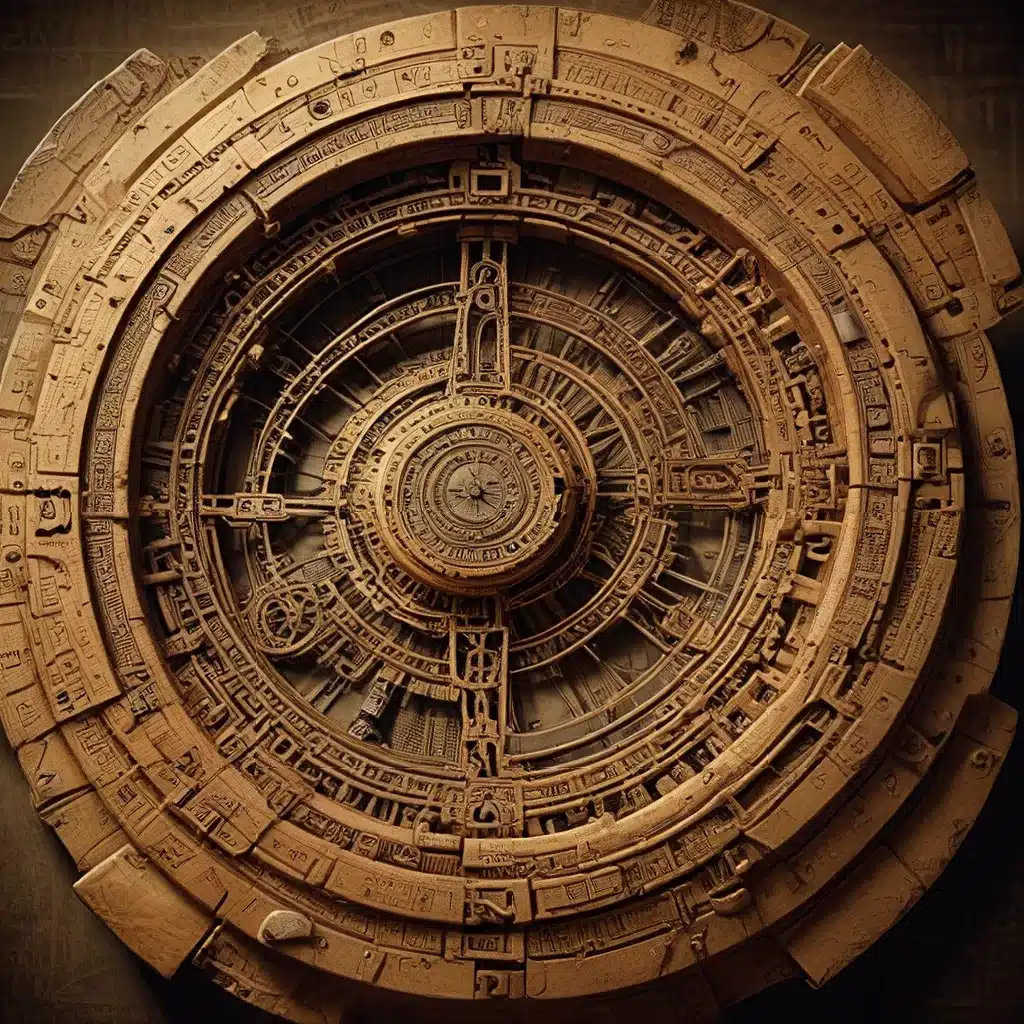
Humanity’s fascination with the mysteries of the past has long fueled our exploration of ancient civilizations and their remarkable technological achievements. From the towering pyramids of Egypt to the intricate stone structures scattered across the deserts of the Middle East, the vestiges of these bygone eras continue to captivate scholars and the public alike. In this article, we delve into the enigmatic discoveries that are shaping our understanding of ancient technological innovations and their lasting impact on the modern world.
The Works of the Old Men: Unraveling the Secrets of the Middle East
The Middle East and North Africa have long been a treasure trove of archaeological wonders, with hundreds of thousands of stone structures dotting the region’s deserts and plains. These enigmatic structures, often referred to as the “Works of the Old Men” by local Bedouin populations, have puzzled archaeologists for decades, as their purpose and origins have remained largely elusive.
Recent advancements in aerial photography and satellite imagery have shed new light on these ancient sites, revealing their intricate designs and staggering scale. Professor David Kennedy, an expert in Roman archaeology and history, has been at the forefront of this research, collaborating with local teams and leveraging cutting-edge technology to uncover the secrets of these stone structures.
Through his work, Kennedy has identified a diverse array of site types, including “gates,” “kites,” “pendants,” and “keyholes,” each with their own unique characteristics and potential functions. These findings have challenged long-held assumptions about the region’s past and have sparked a renewed interest in understanding the technological prowess of the ancient inhabitants of the Middle East.
Collaboration and Technological Advancements: Unlocking the Past
The recent opening of Saudi Arabia to aerial reconnaissance has been a game-changer in this field of study. Historically, access to the region’s archaeological sites has been highly restricted, with limited opportunities for aerial surveys and ground-based investigations. However, the international media coverage of Kennedy’s research, coupled with the Saudi government’s growing interest in preserving and promoting its cultural heritage, has led to a remarkable shift in accessibility.
In October 2022, Kennedy was invited by the Royal Commission for Al-Ula to conduct a series of helicopter flights over the Harret Uwayrid and Harret Raha regions, which had previously been largely inaccessible. This unprecedented opportunity allowed Kennedy and his team to capture thousands of aerial photographs of the stone structures, providing a level of detail and perspective that was previously unattainable.
The collaboration between international experts and local archaeologists has been crucial in this endeavor. Eid al-Yahya, an archaeologist and expert in Arab culture, accompanied the team on their flights, sharing his extensive knowledge of the region and its history. This partnership has been instrumental in contextualizing the discoveries and understanding the significance of these ancient technological innovations.
Piecing Together the Puzzle: Emerging Theories and Future Directions
As the wealth of data collected through aerial surveys and satellite imagery continues to grow, researchers are now faced with the challenge of piecing together the puzzle of these ancient technological innovations. The sheer scale and diversity of the stone structures across the Middle East have led to the development of various theories regarding their purpose and origins.
Some hypotheses suggest that these structures were used for astronomical observation, with their intricate designs potentially serving as celestial markers or calendars. Others propose that they were part of sophisticated agricultural or irrigation systems, harnessing the region’s limited water resources in innovative ways.
Regardless of their specific function, it is clear that these ancient technological achievements represent a level of engineering prowess and organizational complexity that challenges our traditional understanding of the past. As researchers continue to explore and analyze these sites, new insights are emerging that could fundamentally reshape our perception of ancient civilizations and their technological capabilities.
The collaboration between international experts, local archaeologists, and cutting-edge technology has been crucial in this endeavor. The integration of aerial reconnaissance, satellite imagery, and ground-based investigation has allowed researchers to gather a unprecedented level of data, providing a more comprehensive understanding of these ancient wonders.
Toward a Brighter Future: Preserving the Past, Inspiring the Present
As the world becomes increasingly interconnected, the preservation and study of ancient technological innovations have taken on a new significance. These remarkable achievements not only shed light on the past but also inspire us to push the boundaries of what is possible in the present.
The ongoing efforts to document, interpret, and protect the archaeological sites of the Middle East are not just about satisfying academic curiosity; they are about honoring the ingenuity and resilience of the region’s ancient inhabitants. By unlocking the secrets of these technological marvels, we can gain valuable insights that can inform and enhance our own problem-solving abilities, ultimately contributing to a brighter future for all.
The Royal Commission for Al-Ula and its partnership with international experts like Professor Kennedy represent a significant step forward in this endeavor. By investing in systematic aerial surveys, ground-based investigations, and collaborative research, the commission is paving the way for a more comprehensive understanding of the region’s rich cultural heritage.
As we continue to explore the enigmatic technological innovations of the past, we are reminded of the boundless potential of the human spirit. From the towering pyramids of Egypt to the intricate stone structures of the Middle East, these ancient wonders stand as a testament to the ingenuity and resilience of our ancestors, inspiring us to push the boundaries of what is possible and to uncover the secrets that have long eluded us.
The Lost Kingdoms is committed to sharing these remarkable stories and fostering a deeper appreciation for the technological marvels of the past. By bridging the gap between academia and the public, we hope to ignite a passion for exploration and inspire the next generation of historians, archaeologists, and innovators to uncover the mysteries that lie buried beneath the sands of time.


